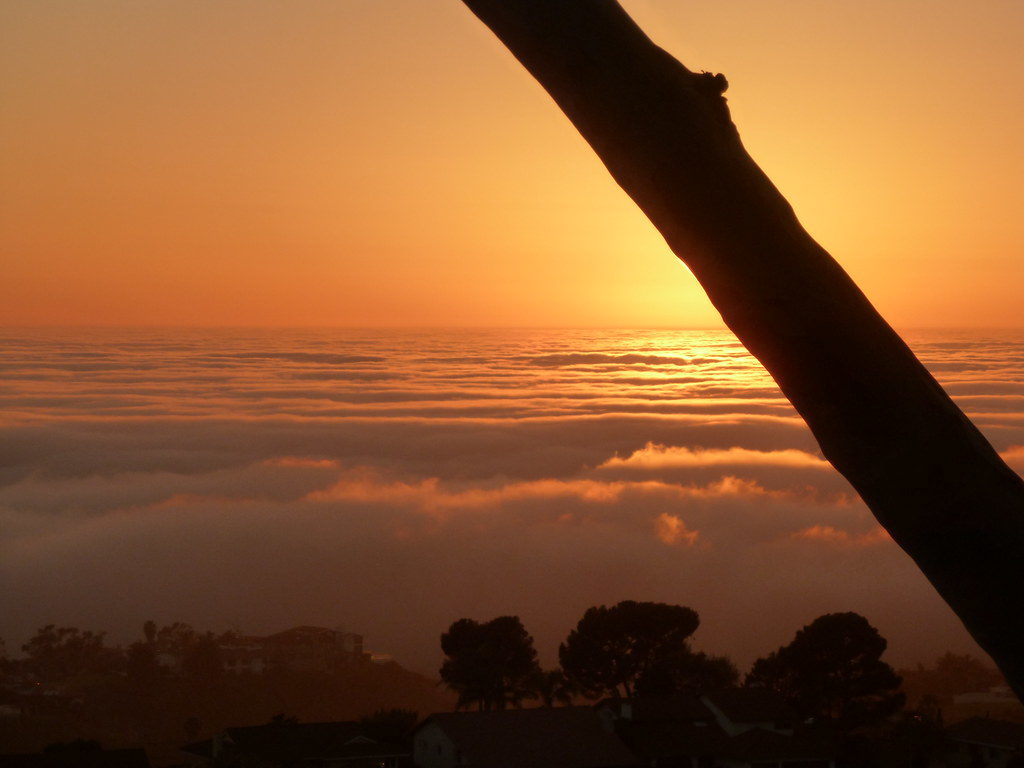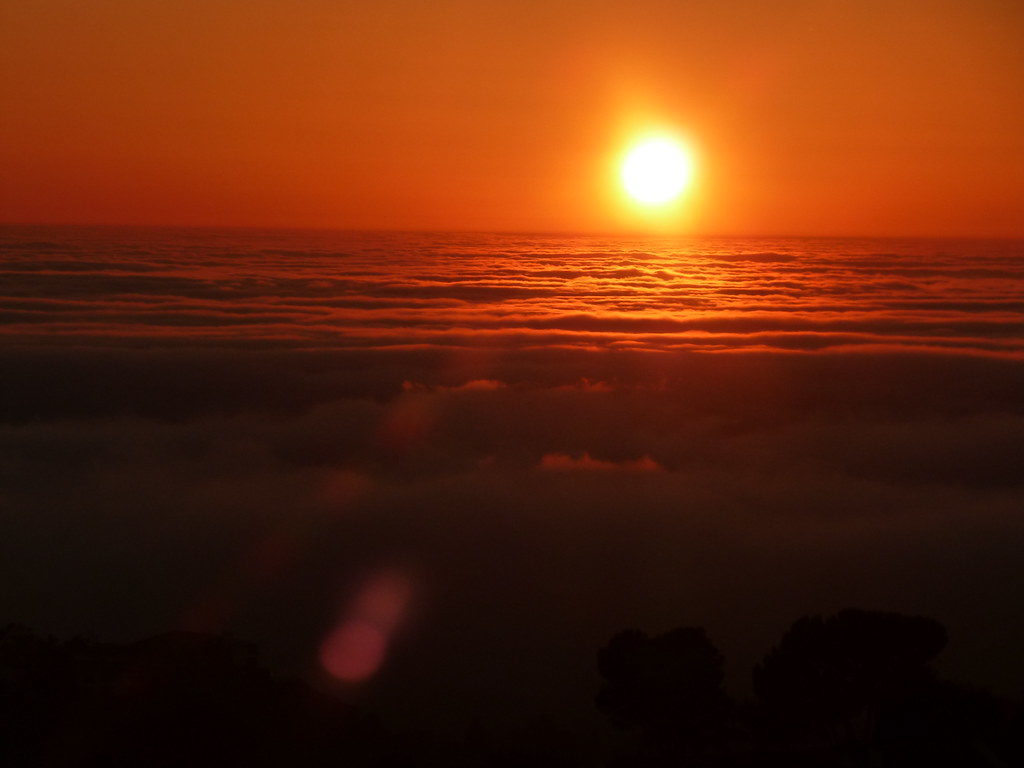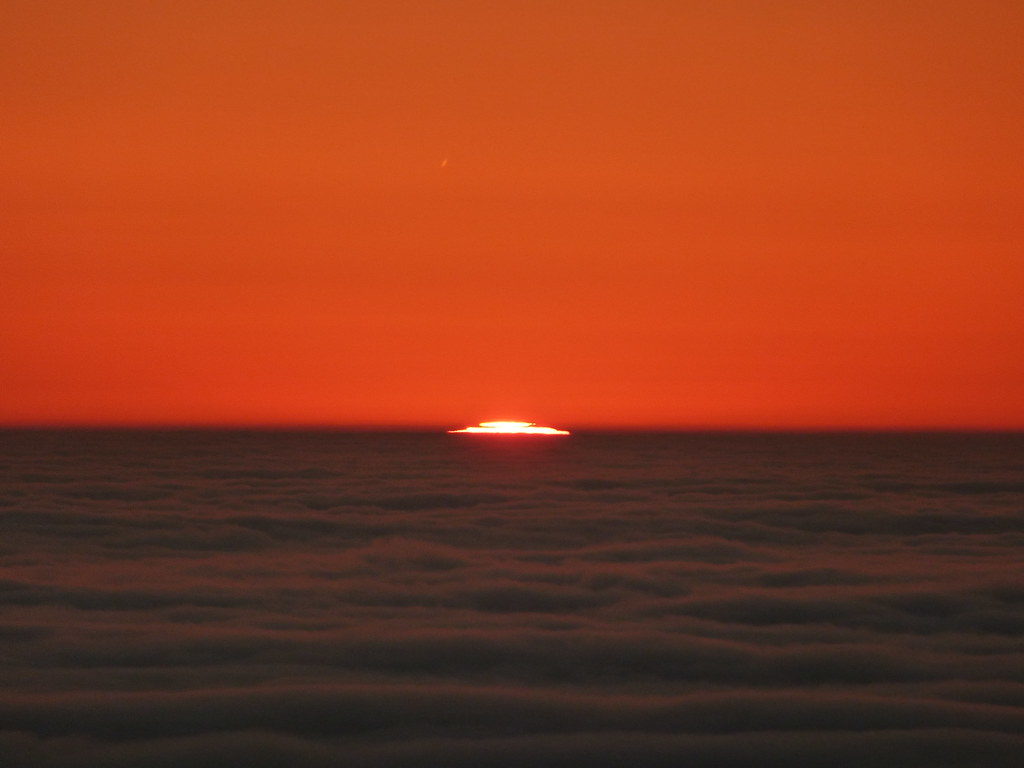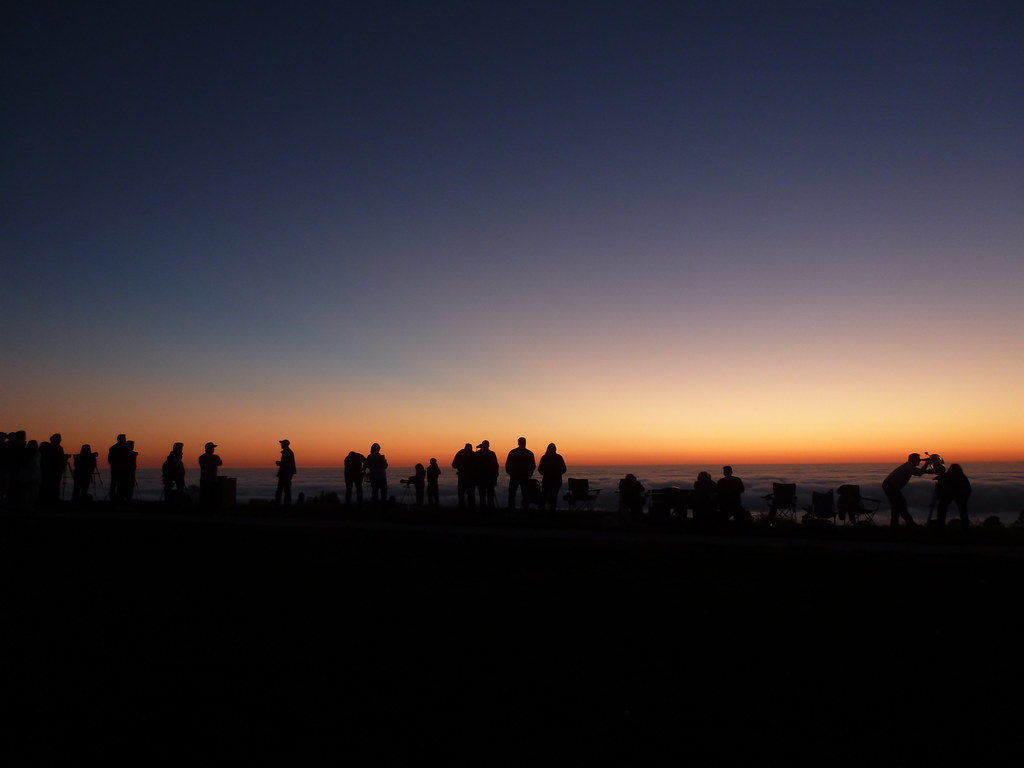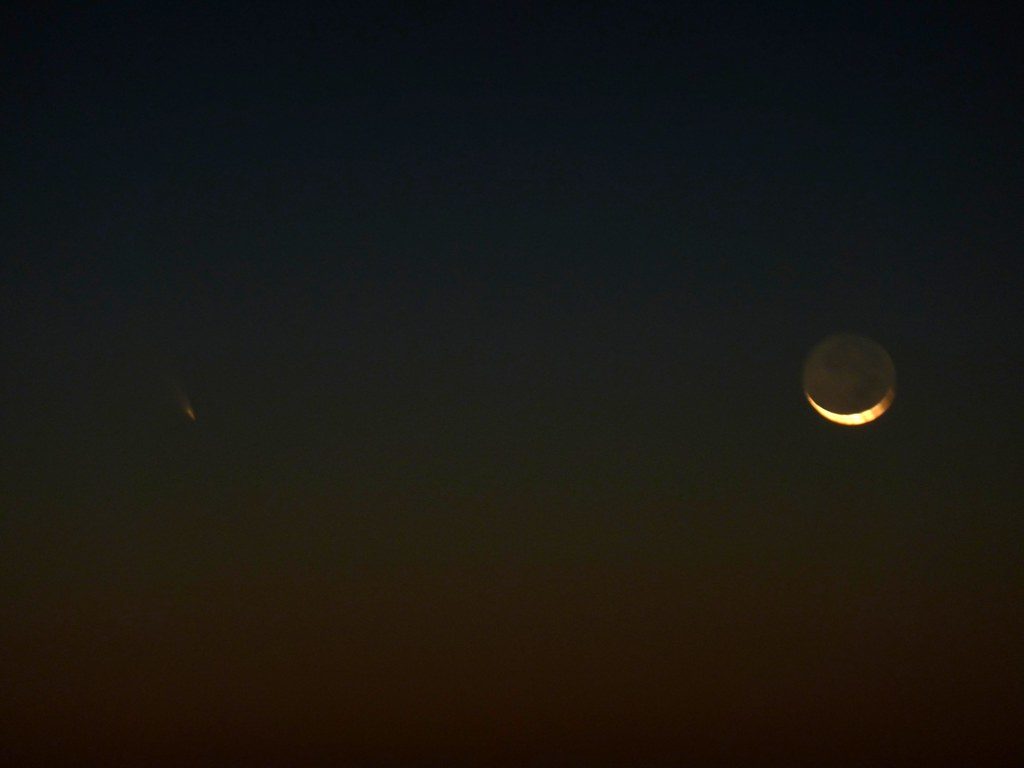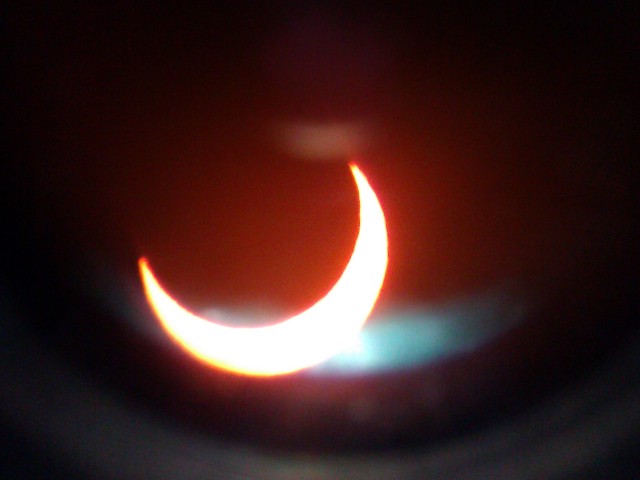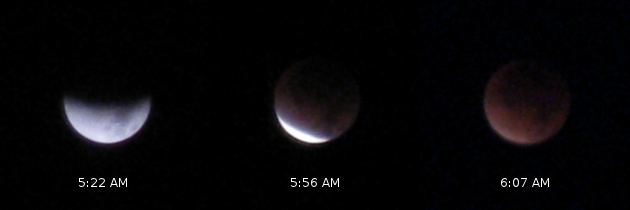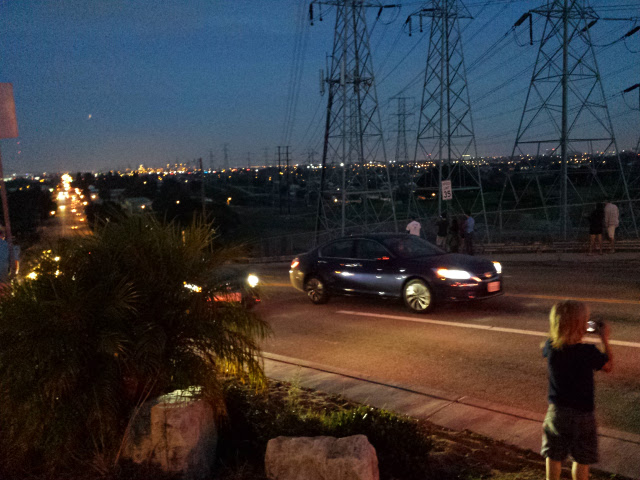After a failed attempt yesterday, I was even more determined to try to spot comet Pan-STARRS tonight when it would appear near the moon. Naturally, the morning was fogged in, and the fog bank remained on the western horizon all day. I looked on Google Earth for a nearby hill with a western view and public access, and I found Fred Hesse, Jr. Park in Rancho Palos Verdes.
I arrived just minutes before sunset, and found thirty or so people lined up along the western edge of the hill with telescopes, binoculars, and cameras on tripods. It reminded me a lot of the eclipse I watched last May (also in Palos Verdes, though at a different park).
Hesse Park has a clear view to the west and southwest, with open space below, then houses, then the tops of the clouds. (I’m not sure what’s usually visible below the cloud layer). Off to the southwest you can see the northwestern section of Catalina Island. To the north you can see Malibu and the Santa Monica Mountains. Way off to the northwest you can see some of the channel islands.
We all watched the sun set above the cloud layer. I’m used to seeing the sun set from beneath clouds, but above? That’s unusual!
Some of us tried to watch for the green flash. No such luck tonight. Though shortly after sunset, someone noticed this white dot near the horizon. Not being entirely sure how far from the sun (or how bright) the comet should be, and not having the moon for reference yet, we wondered whether it could be the comet until I spotted the faint glimmering of the crescent moon several minutes later. (The best guess was that it was an airplane, far enough off to look stationary, reflecting the sunlight.)
As the sky darkened, the comet remained hidden. Some of the people with telescopes started turning them toward a target that we could find: Jupiter. Again like the eclipse party, those with equipment were sharing views with the rest of us, so I got to see Jupiter’s banding and four of its moons at two different magnifications.
Eventually, those of us with binoculars started catching sight of the comet, and were able tell the rest of us where to look. At first I wasn’t sure if I could actually make out the direction of the tail, or if it was just that I knew what direction it should be and my mind was filling in the shape. It became clearer over time — at least when magnified.
Soon, those of us with good eyesight could just barely see a faint dot, two to three finger-widths left of the moon. It did get easier to spot over the next ten to fifteen minutes, but never really resolved into any sort of shape. After a point, the darkening sky stopped helping because the comet slipped closer to the horizon.
I managed to get a few decent long-exposure shots, though I ran into a couple of problems: First, it seems that 15 seconds is just enough at 16x zoom for visible star trails…and visible moon trails. Second, I was using a trash can enclosure as the support for my mini-tripod, and it was right next to one of the telescopes trained on Jupiter up near the zenith…which meant people had to lean down to look into the eyepiece, and kept steadying themselves on the same enclosure, jostling the image. I should have moved, but I was more interested in seeing Jupiter through a scope than getting more photos.
By the time the moon set, a red crescent just touching the horizon, Comet Pan-STARRS was no longer visible. The crowd hadn’t completely broken up yet when I left, though: The comet watchers were still looking at Jupiter and the stars.
